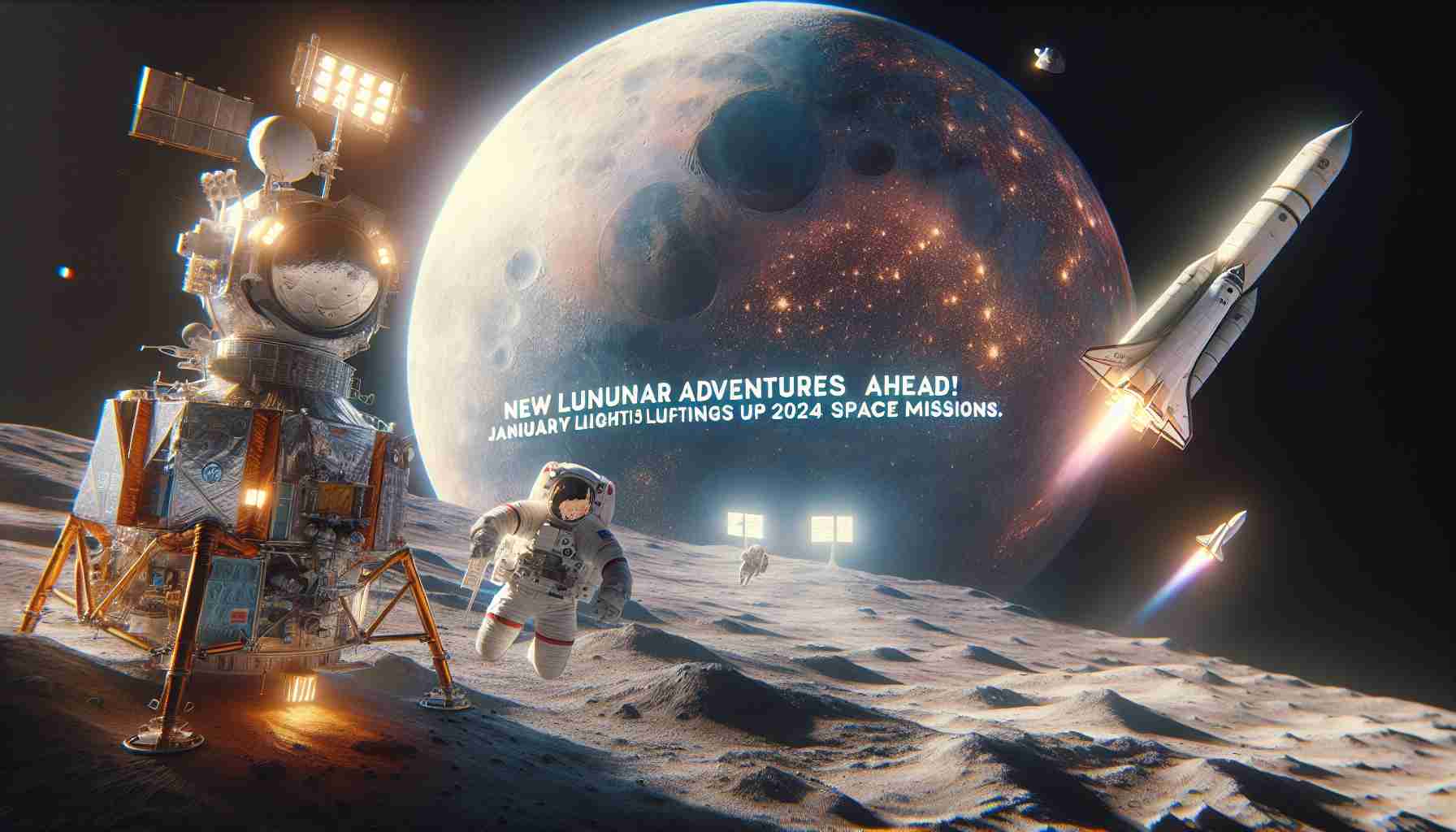NEW DELHI: The Indian Space Research Organisation (ISRO) is on the verge of an exciting new phase in its space exploration endeavors with the recent approval of the Venus Orbiting Satellite project, named Shukrayaan. Set to launch in 2028, this mission will delve into the mysteries of Venus, a planet reminiscent of Earth in many ways.
In an announcement concerning future lunar missions, ISRO director Nilesh Desai detailed plans for the proposed Chandrayaan 4, highlighting a potential collaboration with Japan. This mission aims for an unprecedented landing at the moon’s southern pole, a feat that would surpass previous efforts. The accompanying rover would be significantly larger than its predecessor, paving the way for more ambitious explorations.
Desai also revealed ongoing advancements in satellite technology, aimed at upgrading the INSAT series, which is crucial for meteorological services. The introduction of enhanced sensors will allow for more accurate weather predictions and oceanographic data gathering.
Furthermore, ISRO has ambitious plans for Mars and its very own space station. A mission to not only orbit but also land on Mars is underway, alongside India’s first manned mission, Gaganyaan, scheduled in the next couple of years. With the vision for an Indian space station on the horizon by 2035, the nation is solidifying its role as a key player in the global space community. The innovations and explorations promise to shed light on not just our solar system but also the possibility of life beyond Earth.
India’s Space Odyssey: Unveiling the Future of Exploration and Its Impact on Humanity
The new space initiatives by the Indian Space Research Organisation (ISRO) present not only technological evolution but also offer profound implications for communities and nations globally. As India gears up for groundbreaking missions like the Shukrayaan to Venus and an ambitious Mars plan, several facets of these developments need exploration.
One of the most compelling aspects of ISRO’s upcoming space missions is their potential to enhance international collaboration in space exploration. For instance, the proposed collaboration with Japan on the Chandrayaan-4 lunar mission exemplifies how countries can pool resources and knowledge to achieve more significant breakthroughs. This teamwork can foster diplomatic relations, promote peace, and contribute to shared scientific goals.
What are the advantages of ISRO’s space missions?
1. Scientific Advancement: Missions like Shukrayaan to Venus may reveal vital information about planetary atmospheres and the potential for life beyond Earth. Such discoveries could revolutionize our understanding of the universe.
2. Economic Growth: By investing in space technology and satellite advancements, India could boost its economy. The development of the INSAT series upgrade, with enhanced weather forecasting capabilities, can significantly improve agriculture and disaster management, impacting millions of lives.
3. Educational Opportunities: An Indian space station could spur interest in STEM (science, technology, engineering, and mathematics) fields, leading to a new generation of Indian scientists and engineers. Increased investment in education through scholarships and research grants can empower local communities.
Are there any controversies associated with space exploration?
Despite the promising advancements, there are several controversies surrounding the allocation of resources for space exploration. Critics argue that funds used for ambitious space missions could be better spent addressing pressing domestic issues such as poverty, healthcare, and education. The juxtaposition of spending billions on space while many citizens struggle with basic needs raises ethical questions.
Potential Disadvantages of Space Missions
1. Resource Allocation: Critics contend that prioritizing space exploration over terrestrial necessities could lead to neglect of urgent social issues and economic disparities among the population.
2. Environmental Concerns: The construction and launch of rockets contribute to carbon emissions and other pollution. There is ongoing debate about the environmental impact of increasing space traffic and the sustainability of such missions.
3. Global Competition: As nations enhance their space capabilities, there may arise a competitive atmosphere that could lead to militarization of space, which poses risks to global peace and security.
What questions remain for the future of space exploration?
– Can international collaboration mitigate the issues surrounding space exploration?
Yes, collaboration can bridge gaps in technological and resource disparities, but it requires mutual trust and equitable partnership.
– How will these missions affect global scientific communities?
The findings from missions to Venus or Mars could prompt a new era in planetary science, leading to shared discoveries that could benefit humanity as a whole.
In conclusion, India’s advancements in space exploration, under the guidance of ISRO, promise not only to enhance scientific knowledge but also to bolster international ties and drive economic growth. However, as with any expansive initiative, balancing ambition with ethical considerations and social responsibilities is crucial. For more on ISRO’s exciting developments, visit the official ISRO website.











